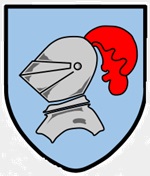Oxford Diecast OXFAC113 German Focke-Wulf Fw 190D-9 Fighter - Jagdgeschwader 4, Frankfurt Am, Rhein, Germany, 1945 (1:72 Scale)
"Guns before butter. Guns will make us powerful; butter will only make us fat."
- Reichsmarschall Hermann Goering, Head of the German Luftwaffe
 Nicknamed the "Butcher Bird," the Fw 190 was Germany's best air-to-ground fighter. Faster and more agile than the British Spitfire, it dominated the skies over Europe as a fighter and was the Luftwaffe's most important ground-attack aircraft. Controlled by the skilled hands of aces like Oberleutnant Otto Kittel, the FW-190 gained the reputation of being one of the greatest fighters of all time. This fighter-bomber and anti-tank aircraft was almost impossible to defeat until the introduction of the long-range P-51 Mustang.
Nicknamed the "Butcher Bird," the Fw 190 was Germany's best air-to-ground fighter. Faster and more agile than the British Spitfire, it dominated the skies over Europe as a fighter and was the Luftwaffe's most important ground-attack aircraft. Controlled by the skilled hands of aces like Oberleutnant Otto Kittel, the FW-190 gained the reputation of being one of the greatest fighters of all time. This fighter-bomber and anti-tank aircraft was almost impossible to defeat until the introduction of the long-range P-51 Mustang.
First appearing in August 1944 as a result of a special Air Ministry requirement, the Fw 190D-9 was an attempt to produce a high-altitude fighter based heavily on an existing fighter, the Fw 190A-8. The nose was reshaped and lengthened to accommodate a new engine. The Fw 190D-9 proved to be a superb fighter.
This 1:72 scale German Focke-Wulf Fw 190D-9 fighter was operated by Jagdgeschwader 4, which was deployed to Frankfurt Am, Rhein, Germany, during 1945.
Sold Out!
Dimensions
Wingspan: 5-inches
Length: 5-inches
Release Date: April 2024
 Historical Account: "Bomber-Killers" - Jagdgeschwader 4 became one of only three Luftwaffe geschwader to operate the specialized 'bomber-killer' gruppen designated Sturmgruppe. II./JG 4 Sturmgruppe was formed on July 12th, 1944, at Salzwedel from I./Zerstorergeschwader 1 (ZG 1) and from elements of Major Hans-Gunter von Kornatzki's Sturmstaffel 1. The gruppe was equipped with the modified and heavily armoured FW 190A-8/R2. While the heavily armoured fighters proved effective against the heavy bombers of the USAAF, they proved vulnerable to the numerous escort fighters and hence suffered heavy losses. III./JG 4 was also formed in July 1944 from III./ZG 1 in Rotenburg.
Historical Account: "Bomber-Killers" - Jagdgeschwader 4 became one of only three Luftwaffe geschwader to operate the specialized 'bomber-killer' gruppen designated Sturmgruppe. II./JG 4 Sturmgruppe was formed on July 12th, 1944, at Salzwedel from I./Zerstorergeschwader 1 (ZG 1) and from elements of Major Hans-Gunter von Kornatzki's Sturmstaffel 1. The gruppe was equipped with the modified and heavily armoured FW 190A-8/R2. While the heavily armoured fighters proved effective against the heavy bombers of the USAAF, they proved vulnerable to the numerous escort fighters and hence suffered heavy losses. III./JG 4 was also formed in July 1944 from III./ZG 1 in Rotenburg.
In common with other fighter units engaged in Reichsverteidigung operations the Geschwader were sported unique coloured rear fuselage banding markings in mid 1944, with differing color combinations unique to each wing. JG 4's marking was a black-white-black band on the rear fuselage.
On September 11th, 1944, II.(Sturm)/JG 4 escorted by III. Gruppe intercepted a USAAF bombing raid near Chemnitz. Attacking the 100th and 95th Bomb Groups the Geschwader claimed some 13 destroyed bombers. Intercepted by the 339th and 55th Fighter Groups JG 4 was severely mauled, and lost 21 pilots killed and 9 more were seriously injured during the mission.
Some JG 4 aircraft displayed on the engine cowling the Geschwaderzeichen, a blue escutcheon with a grey or silver knight's helmet with a red (red-white) plume.


